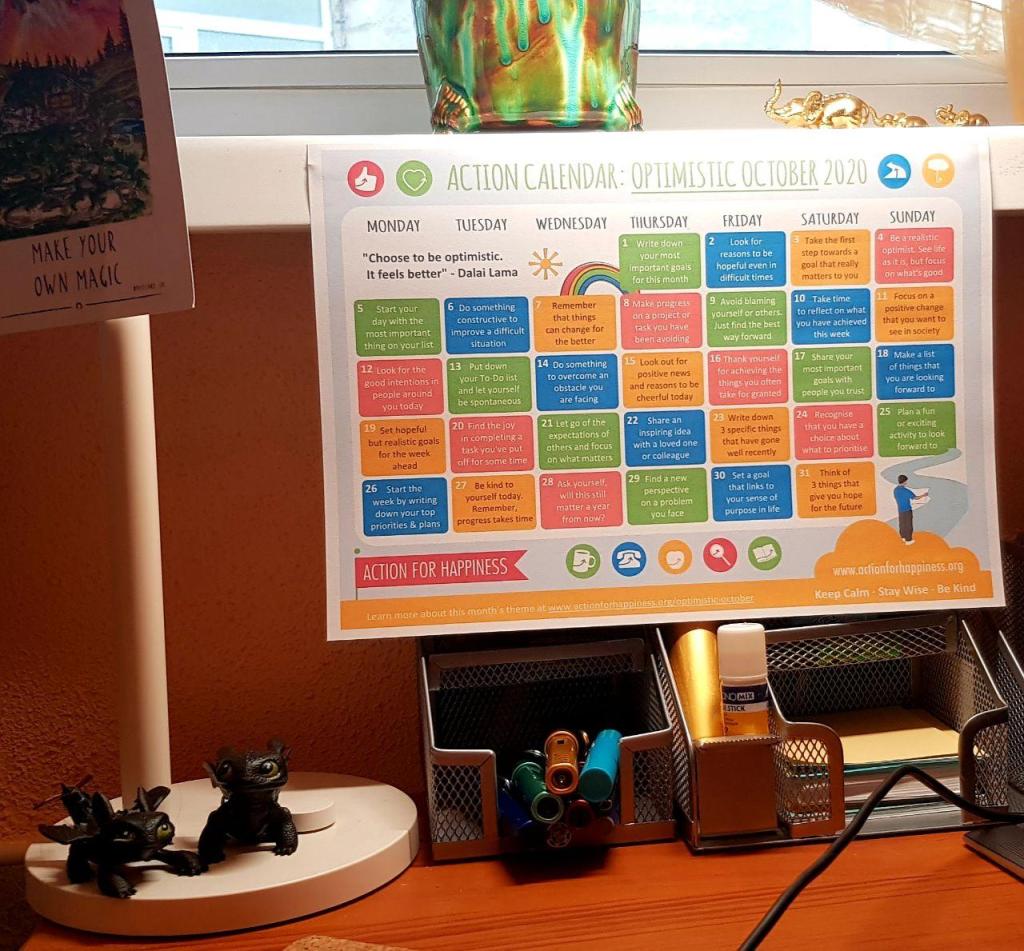
Mornings are getting darker and darker where I live – I can’t believe it’s 1 October already! To brighten up the autumn cold, here is a great printable calendar from ActionforHappiness.org: you can share it with students and encourage them to complete each daily task in English and write about it a special diary or even on Instagram.
My prinout with a bit of my desktop is featured in the photo – you can share yours 😉








